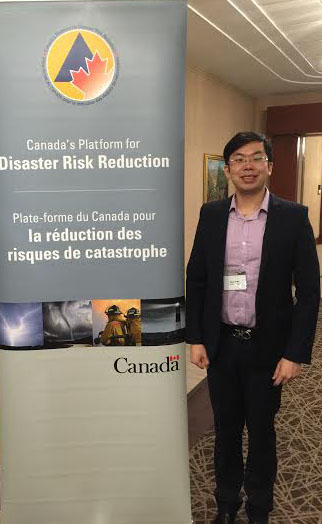Posted by Dr. Wu on / 0 Comments
 The 6th Annual National Roundtable on Disaster Risk Reduction was held in Calgary, Alberta on November 2 and 3. Based on the United Nations’ Sendai Framework 2015-2030, this roundtable gathered professionals in the fields of disaster risk reduction and crisis management to decipher Canadian implements towards the Sendai Framework in order to chart the future of disaster risk reduction in Canada.
The 6th Annual National Roundtable on Disaster Risk Reduction was held in Calgary, Alberta on November 2 and 3. Based on the United Nations’ Sendai Framework 2015-2030, this roundtable gathered professionals in the fields of disaster risk reduction and crisis management to decipher Canadian implements towards the Sendai Framework in order to chart the future of disaster risk reduction in Canada.
In the keynote presentation, the special representative for the United Nations’ secretary-general for disaster risk reduction, Ms. Margareta Wahlström, highlighted the social dimension in the Sendai Framework and requested all the professionals in the fields of climate change adaptation and disaster risk reduction to concentrate on the local residents, especially the vulnerable groups’ social roles in the pre-disaster preparedness, emergency response, post-disaster reconstruction, recovery and resilience.
Speaking as a social architect and social planner, during the discussion section, I argued that recent community and regional planning and urban design projects have not included enough local residents’ voices. Hence, my encouragement was that architects, planners and urban designers should work towards increasing the local residents’ participation, especially the vulnerable groups’ engagement into planning and design process. Furthermore, professional designers usually pay dominate attention to the physical aspects of the resultant design. Social science practitioners always focus on the social implementation acting upon the built environment. The cooperation between these two streams is very limited at the beginning of the planning and design process. I illustrated this gap in my dissertation about the activities that took place after the Wenchuan earthquake in Sichuan, China. I am continually conducting research on this issue with the hope of finding suitable interventions to narrow the gap.
